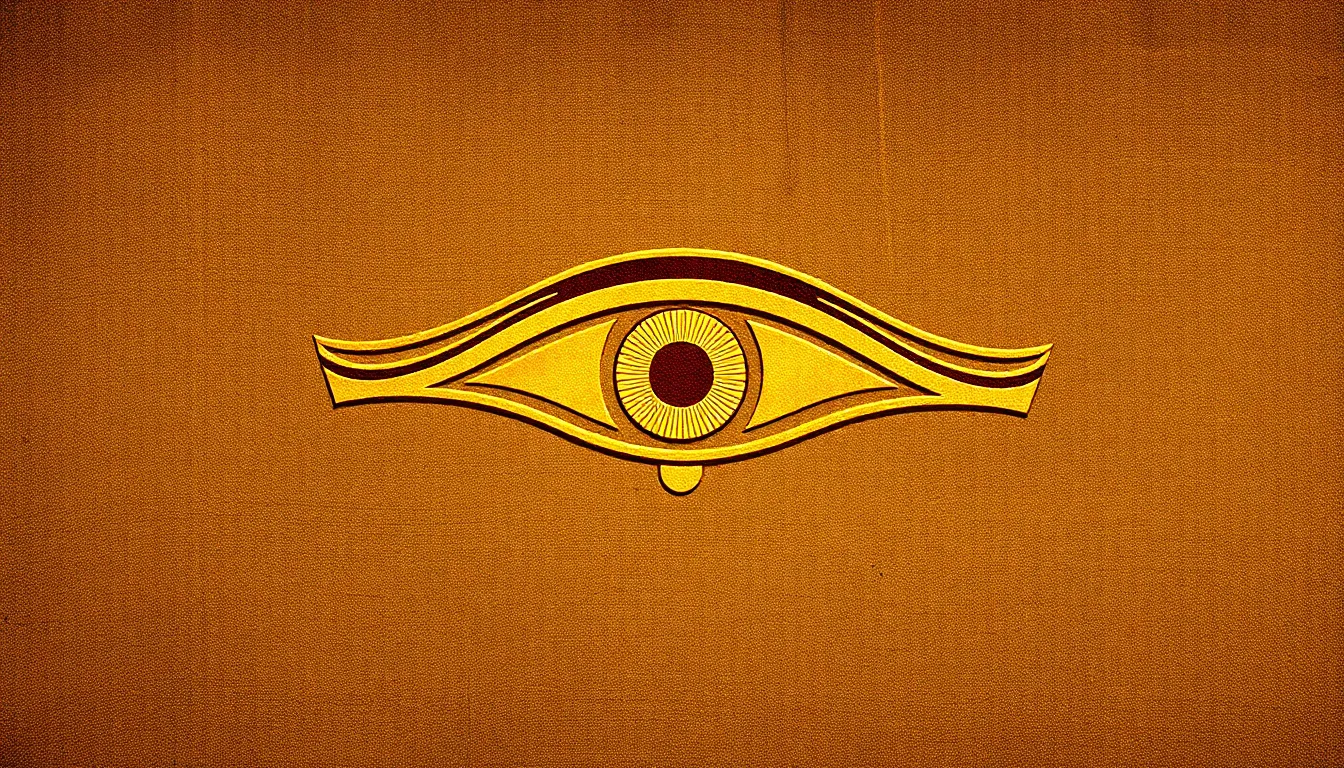The Symbolism of the Eye of Horus: Protection and Healing
I. Introduction
The Eye of Horus, also known as the Wadjet, is one of the most recognizable symbols of ancient Egypt. It represents not only the eye of the sky god Horus but also encompasses a wealth of meanings tied to protection, healing, and divine insight. In ancient Egyptian culture, the Eye of Horus held significant importance, serving as a powerful emblem in both daily life and spiritual practices.
This article aims to explore the rich symbolism of the Eye of Horus, focusing specifically on its dual roles as a protector and a healer throughout ancient Egyptian history and its lasting legacy in modern spirituality.
II. Historical Context of the Eye of Horus
The origins of the Eye of Horus are deeply rooted in ancient Egyptian mythology, particularly in the tales of Horus, the falcon-headed god associated with kingship and the sky. The symbol itself is often depicted as a stylized eye, with intricate markings that convey its significance.
The story of Horus is filled with conflict, particularly his battles against Set, the god of chaos. After losing his left eye in a fight, Horus sought the help of Thoth, the god of wisdom, who restored it. This act of healing gave rise to the Eye of Horus as a powerful symbol of restoration and protection.
Over time, the symbol evolved and was adopted in various forms, influencing art, religion, and daily life in ancient Egypt.
III. The Eye of Horus as a Symbol of Protection
The Eye of Horus was revered as a symbol of protection in various contexts, especially in funerary practices. Its significance can be observed in the following aspects:
- Significance in funerary practices: The Eye of Horus was often included in burial artifacts and tomb paintings to ensure safe passage to the afterlife and protect the deceased from malevolent spirits.
- Use in amulets and talismans: Ancient Egyptians wore amulets shaped like the Eye of Horus to safeguard themselves from harm and misfortune. These amulets were believed to provide divine protection in life and death.
- Role in warding off evil and misfortune: The Eye of Horus was a common protective symbol against evil forces, and its image was frequently inscribed on buildings and personal items to invoke its safeguarding powers.
IV. The Eye of Horus and Healing
Beyond its protective qualities, the Eye of Horus is also closely associated with health and healing in ancient Egyptian beliefs. This connection can be delineated as follows:
- Connection to health and wellness in ancient beliefs: The Eye of Horus was believed to possess restorative powers, capable of healing the sick and injured. It was often invoked in healing rituals performed by priests.
- The Eye as a symbol of restoration and wholeness: As a representation of Horus’s restored eye, it symbolized not just physical healing but also spiritual wholeness and balance.
- Rituals and practices associated with healing: Various rituals involved the recitation of prayers and the application of the Eye of Horus symbol to promote health and well-being among the ancient Egyptians.
V. The Eye of Horus in Art and Iconography
The Eye of Horus has been a prominent feature in ancient art and iconography, serving as a source of inspiration through the ages. Its presence can be observed in numerous contexts:
- Depictions in ancient artifacts and architecture: The Eye of Horus can be found in hieroglyphs, sculptures, and temples, often accompanying depictions of Horus and other deities.
- Influence on modern interpretations and adaptations: The symbol has transcended its ancient roots, becoming a popular motif in modern jewelry, tattoos, and various art forms.
- Symbolism in contemporary art and fashion: Today, the Eye of Horus continues to resonate in contemporary culture, symbolizing protection and insight in fashion and artistic expressions.
VI. The Eye of Horus in Modern Spirituality
In modern times, the Eye of Horus has found new life in various spiritual and metaphysical practices:
- Relevance in modern metaphysical practices: Many people view the Eye of Horus as a powerful symbol for protection and spiritual awakening, incorporating it into rituals and practices aimed at enhancing intuition and insight.
- Use in meditation and visualization techniques: The symbol is frequently used in meditation to focus the mind and promote healing, balance, and personal empowerment.
- The Eye of Horus as a universal symbol of protection and healing: Its enduring legacy has made it a universal emblem recognized across cultures, symbolizing a connection to higher knowledge and spiritual protection.
VII. Critiques and Misinterpretations
Despite its rich history, the Eye of Horus is often misinterpreted or misused. Some critiques include:
- Common misconceptions about the Eye of Horus: Many people mistakenly associate the symbol solely with evil or the occult, overlooking its protective and healing attributes.
- Cultural appropriation and its implications: The use of the Eye of Horus in modern contexts can sometimes be seen as cultural appropriation, raising issues about respect and understanding of its origins.
- Importance of understanding the symbol within its historical context: To appreciate the Eye of Horus fully, it is crucial to recognize its significance in ancient Egyptian culture rather than reducing it to a mere aesthetic symbol.
VIII. Conclusion
In summary, the Eye of Horus embodies a profound duality of protection and healing. Its symbolism has permeated ancient Egyptian culture and continues to resonate in modern spirituality. As we embrace the Eye of Horus in contemporary life, it is essential to acknowledge and respect its historical significance while recognizing its potential as a source of strength and insight.
The lasting impact of the Eye of Horus serves as a testament to the enduring power of ancient symbols and their ability to inspire and protect us across the ages.




